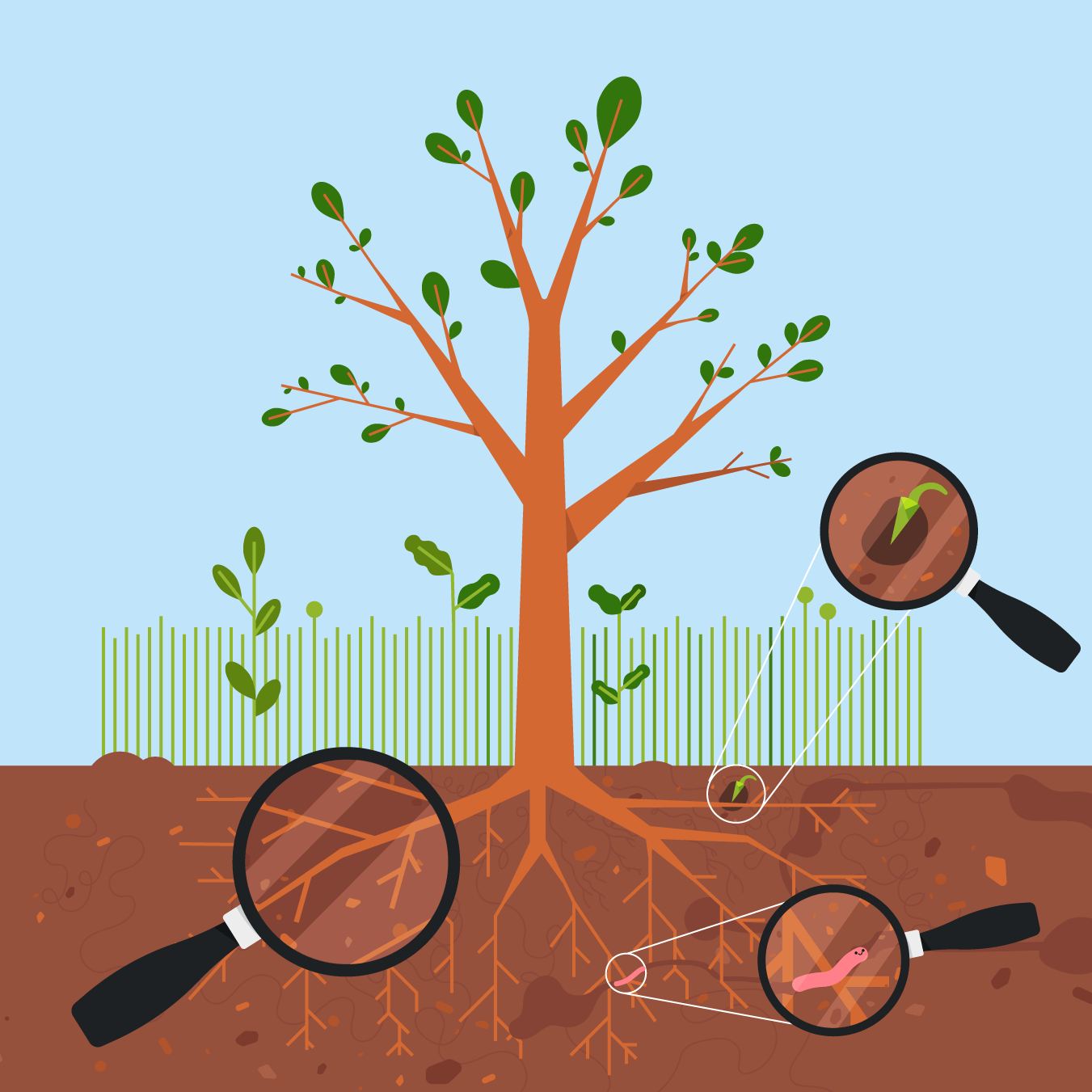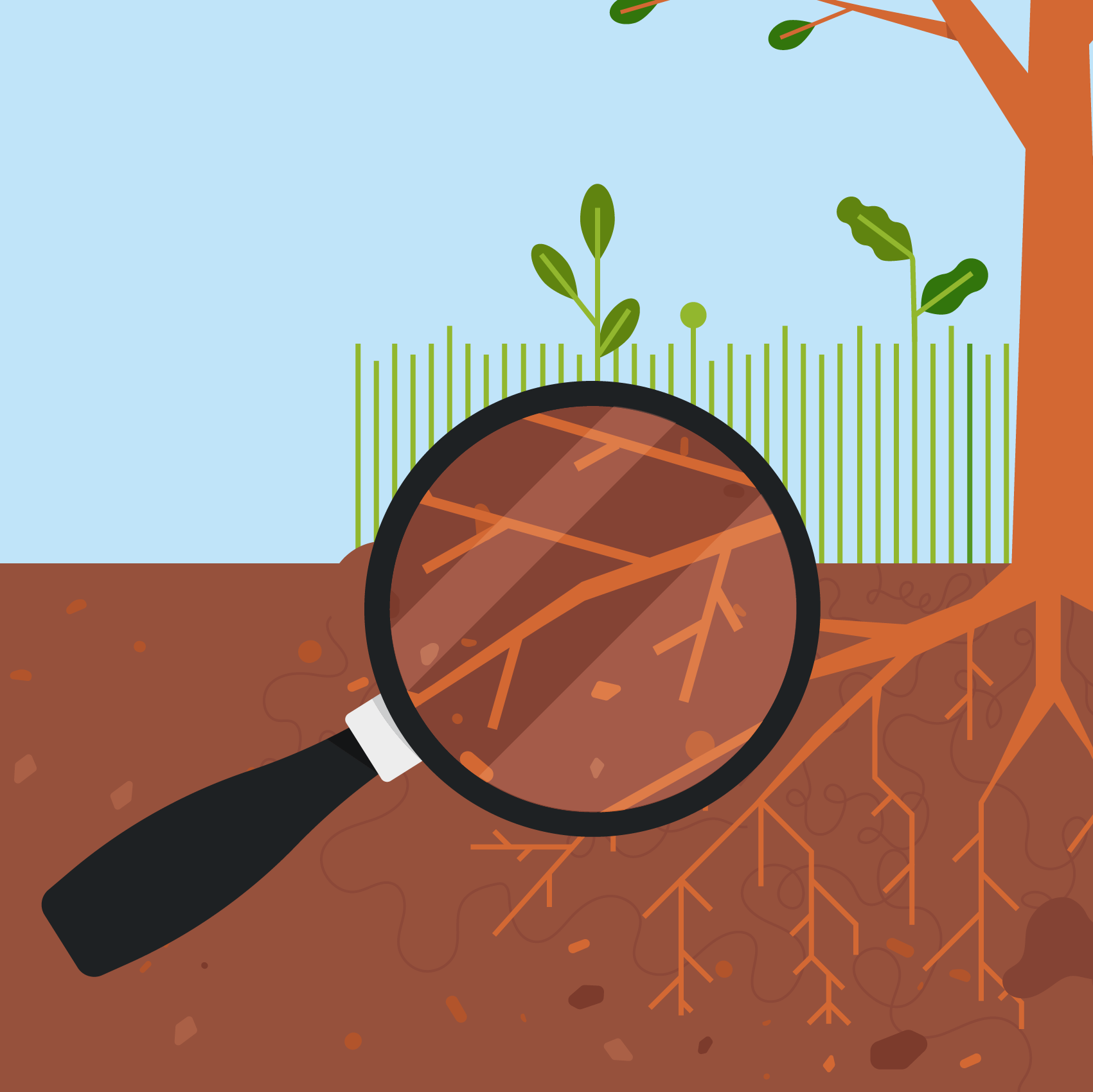soil microbiome
Soil health is the cornerstone of plant, animal and human health. Regenerative farmers take many actions to repair, protect and enrich soil, and to build new soil. Regenerative farmers:
-
Keep the soil covered at all times.
-
Increase soil moisture-holding capacity by increasing organic matter in the soil.
-
Encourage a diversity of plant life rather thana single species monocrop.
-
Use these and other techniques to build resistance to erosion and sun-bleaching.
These, and other regenerative farming practices such as managing grazing and minimising tillage, all operate to build soil health at the microbial level. With up to a billion bacteria in one gram of soil, microbes are small, but they are mighty!

